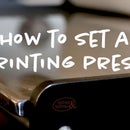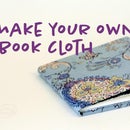Introduction: Using Paper Texture Brushes in Procreate
In this tutorial I'm going to show you how to use Paper Texture brushes in Procreate to get a variety of effects. I'll be showing you how to use a texture brush to create a variety of paper finishes across your entire canvas, and also how you can use the brushes to apply texture in specific areas of your canvas.
Procreate is a drawing app for the iPad. It's best used with an Apple Pencil, but you can also draw with your fingertips. An Apple Pencil will be a bit less frustrating, and will allow you to draw with greater precision.
In this tutorial, I'll be using a set of paper texture brushes that I made. If you like them, they're available for sale on my website, but you can also follow this tutorial if you've bought texture brushes elsewhere or made your own.
Supplies
iPad suitable for running the Procreate app
Apple Pencil
Procreate app
Procreate paper texture brushes made with repeating patterns
Step 1: Installing New Brushes in Procreate
Procreate comes with a large selection of brushes already installed, and it's very easy to install third party brushes you've bought elsewhere online.
Simply download the brushes to your iPad, unzip the file if it's compressed, then tap on the brush file. Your brushes will automatically open and install in the Procreate app.
You then be able to see your paper texture brushes in the "Brush" menu.
Step 2: Creating a Natural Look Paper Background
You can add a paper texture to your Procreate project before or after creating your drawing. In this example, I've already made my drawing and will be applying the paper texture layer to it.
To create a natural looking paper background, tap the "Layers" menu and hit the "+" button to create a new layer. If it's not already there, drag this layer to the top, above all other layers.
Tap on the "N" to open up the layer setting menu. "N" stands for "normal", and is the default blending mode for your layer. Scroll through the list of blend modes and select "multiply". With this setting, any white areas on the layer remain transparent, and any darker areas multiply with the colours below and become darker, giving the appearance of tone and shade.
Open up the "Colour" menu and pick a colour for your paper. For natural looking papers, I recommend a light fawn shade, but experiment to see what works for you.
When you're ready, colour across your canvas with your Apple Pencil. My paper texture brushes are very large, making it nice and quick to fill the whole canvas, but you can adjust the size and opacity of the brush as you please.
Step 3: Examples of Different Paper Textures Applied to a Canvas
Paper textures vary wildly depending on the kind of paper you choose. In traditional art, the paper texture impacts how you make your art, but in digital art, you can use any kind of paper texture to adjust the look of your drawing.
Scroll through the images in this step to see how different paper textures applied using the settings in the previous step can add to an image.
Step 4: Using Paper Textures Designed for Darker Colours
Several of the paper textures in my pack are designed to be used with darker colours.
Contrary to using textures meant for lighter coloured papers, you may find it best to use these papers on the bottom layer of your project.
After dragging my paper layer underneath my image, I added a new layer just above it that gave my dove a white base to help the transparent colours in my image stand out from the dark background.
Step 5: Using Paper Textures in Selected Areas of Your Image
To apply a paper texture to only one area of your image, you can use a Clipping Mask layer.
Create a new layer above the one that you want to apply the paper texture to, then click on the layer again and new menu will expand out beside it. Choose "Clipping Mask" from this menu. This option creates a mask on any areas of the layer it's applied to, and your paper texture will only stick to those areas where you've drawn something.
Using this option you can layer up textures over a shape to make some really interesting, fun and creative effects.
That's it! Go make some art!













